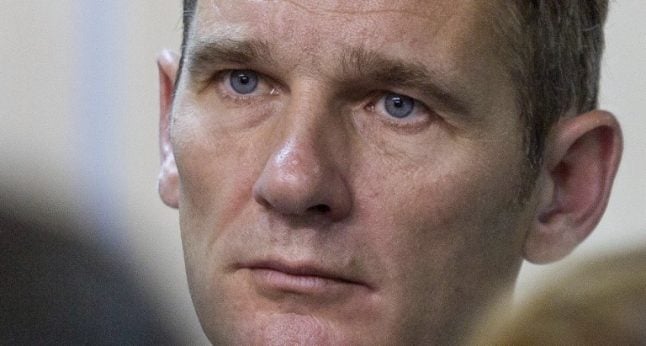The choice of penitentiary was revealed on Monday morning when Urdangarin, who is married to the King’s sister Cristina, turned up at the gate to begin his sentence.
READ MORE:
- Urdangarin: King's brother-in-law given five days to report to jail of choice
- Urdangarin: Spanish king's brother-in-law loses appeal and faces jail
He arrived at Brieva, a prison 100 km north of Madrid and 7km outside the walled city of Avila, at 8am on Monday.
The choice of jail is an unusual one.
The former Olympic handball player has opted for a small jail where the inmates are exclusively women, and very limited facilities when it comes to exercise yard and activities.
Although it has a small unit for male inmates – comprising four cells – the last one left in 2005 after he requested a transfer to a prison near Zaragoza.
That was another high profile figure involved in a corruption; Luis Roldan, a former Civil Guard chief and Socialist (PSOE) politician, Luis Roldán, who was sentenced to 31 years for embezzlement, bribery, tax evasion and fraud.
He served 11 of them at Brevia and when he left wrote a letter to the prison service containing “shocking” passages on the techniques he used to avoid “losing his head”, according to online newspaper El Diario.
Urdangarin elige el destierro interior de Brieva que amenazó la salud mental de Roldán https://t.co/jpKORNd16p Lo analiza @pedroagueda pic.twitter.com/IIX60UW1dL
— eldiario.es (@eldiarioes) June 18, 2018
The newspaper reported that Urdangarin can expect to have a television in his cell and can request books from the library in the women’s wing.
He will be watched over by one prison guard on rotation within a team of eight and will be allowed weekly visits from friends and family.
But the prison will be expected to supply gym equipment because no such facilities currently exist in the men’s unit and the exercise yard comprises a space of only “25 steps long by 7 steps wide”.
Sources told Eldiario.es that the choice was positive for prison authorities as it avoids having to take extra security precautions that might be necessary for a high-profile prisoner incarcerated among other prisoners.
Podemos were quick to lambast the news, insisting that the former Duke of Palma, who was stripped of his title after the scandal, was receiving “special privileges”.
“This is clearly a case of royal privilege,” Pablo Echenique, Podemos's secretary of organisation, told reporters on Monday. “Not everyone gets the choice of being incarcerated in a women's prison, ordinary prisoners do not have the same privileges as the king's brother-in-law.”
The 50-year-old had been found guilty last year of embezzling millions of euros between 2004 and 2006 from a non-profit foundation he headed on the island of Majorca.
Urdangarin's incarceration came six days after the Supreme Court rejected his appeal and handed him a sentence of five years and 10 months of prison for embezzling millions of euros in a case which caused uproar in Spain and tainted the royal family's image.
The scandal contributed to the decision of King Felipe VI's father Juan Carlos I to abdicate in 2014.



 Please whitelist us to continue reading.
Please whitelist us to continue reading.